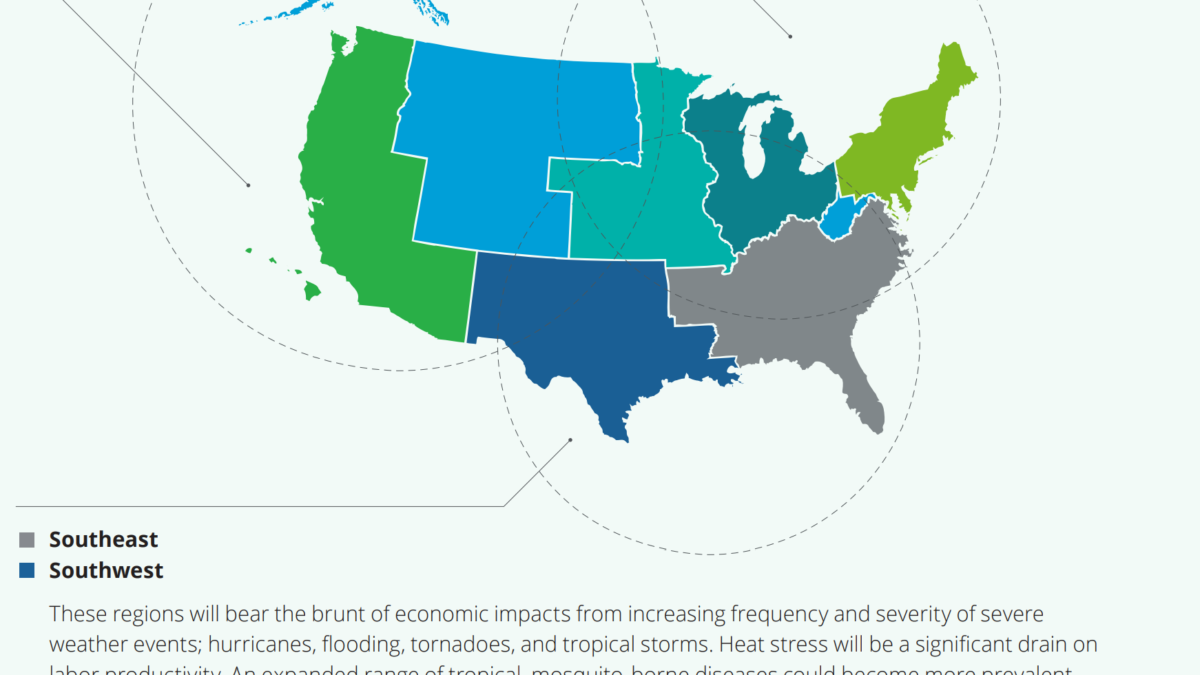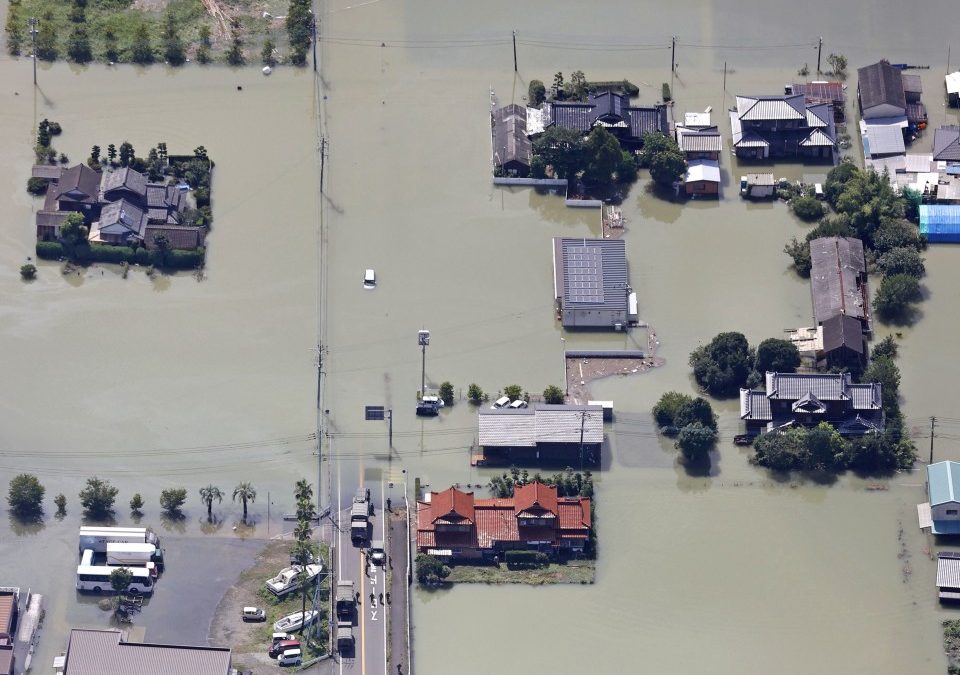Western Mediterranean heatwave rare even for today’s warmed world – Extreme April 2023 heat in Spain, Portugal, Morocco, and Algeria almost impossible without climate change

7 May 2023 (Climate Centre) – A rapid study of last month’s extraordinary heatwave in the western Mediterranean by World Weather Attribution scientists says that while Europe and North Africa have experienced more extreme heat in recent years, the April heatwave was “so extreme that it is also a rare event in today’s warmer climate”.
During the last week of April, temperatures in parts of Spain, Portugal, Morocco and Algeria were up to 20°C higher than normal for the time of year (image).
The Portuguese and mainland Spanish April records were broken by large margins, with 36.9°C and 38.8°C respectively observed in the south of the Iberian peninsula; local April records were also broken in Morocco, and temperatures above 40°C were recorded in Algeria.
Scientists from (alphabetically) France, Morocco, the Netherlands, the UK and the US assessed how climate change has altered the likelihood and intensity of such an early-season heatwave; it would have been “almost impossible” without climate change, they conclude.
‘More common, longer, hotter’
WWA team-member Fatima Driouech, Associate Professor at Morocco’s Mohammed VI Polytechnic University, said: “The intense heatwave came on top of a pre-existing multi-year drought, exacerbating the lack of water in western Mediterranean regions and threatening the 2023 crop yield.
“As the planet warms, these situations will become more frequent and call for long-term planning, including implementing sustainable agricultural models and effective water-management policies.”
The Climate Centre’s Roop Singh, who leads its work on extreme heat, said Friday: “Early-season heatwaves tend to be deadlier as people have not yet prepared their homes or acclimated to summer temperatures.
“In Spain, for example, we saw heatwave adaptation measures put in place earlier than usual, which is exactly what we need to see more of to reduce preventable deaths from heat.”
In its own summary of the WWA study, the World Meteorological Organization also points out that last month’s event occurred “against the backdrop of an intense drought”. Worldwide, the WMO adds, climate change has made heatwaves “more common, longer and hotter”.
Just before the heatwave peaked, the European Commission’s Directorate-General for Defence Industry and Space tweeted satellite photos of parched landscapes in Andalusia, Spain and the Algarve in Portugal, commenting that drought was having a “severe impact on agriculture and biodiversity” in the former, while reservoirs in southern Portugal were 15 per cent below what they should be.
Study: Western Mediterranean heatwave rare even for today’s warmed world

Extreme April heat in Spain, Portugal, Morocco & Algeria almost impossible without climate change
5 May 2023 (World Weather Attribution) – A large area of Southwestern Europe and Northern Africa experienced extremely high temperatures usually only seen in July and August, at the end of April 2023.
During the last week of April 2023 local temperatures in many regions in Spain, Portugal, Morocco and Algeria were up to 20 degrees higher than normally at this time of year. For Portugal and mainland Spain the national April record was broken by a very large margin, with 36.9°C and 38.8°C respectively measured in the southernmost parts of the countries. In Morocco, several (local) April records have been broken across the country and temperatures exceeded 41°C in some cities such as Sidi-Slimane, Marrakech, Taroudant. Temperatures exceeded 40°C in Algeria on 28 April (Maghnia, Mascara-Ghriss at least).
These record-shattering temperatures came on top of a historical multi-year drought in those regions, exacerbating the impacts of the heat on agriculture which is already threatened by an increasing water scarcity resulting from the combined effect of climate change and water use.
While verified mortality data from the current heatwave are not yet available, we do know that in 2022 heatwaves contributed to nearly 4000 deaths in Spain and over 1000 deaths in Portugal (WHO, 2022). Every year, an average of 262, 250, and 116 people die from heat-related illness in Algeria, Morocco, and Tunisia, respectively (Hajat et al., 2023). In Tunis, a review of all-cause mortality between 2005-2007 found that for every degree Celsius over 31.5C, the daily mortality increased by 2% (Bettaieb et al, 2020). Early season heatwaves tend to be particularly deadly because of a lack of acclimatisation of the population, lower preparedness for heat (e.g. people have not yet brought out fans or A/Cs from storage), and harvesting effects (Gasparrini et al., 2016; Lee et al., 2014).
Scientists from Morocco, France, the Netherlands, the US and the United Kingdom, collaborated to assess to what extent human-induced climate change altered the likelihood and intensity of this early season heatwave.
Using published peer-reviewed methods, we analysed how human-induced climate change altered the likelihood and intensity of the 3-day heatwave event that occurred on 26-28 of April 2023, in the most affected region (see Figure 1, black outline).
Main findings
- Heatwaves are amongst the deadliest natural hazards with thousands of people dying from heat-related causes each year. However, the full impact of a heatwave is often not known until weeks or months afterwards, once death certificates are collected, or scientists can analyse excess deaths. Many places lack good record keeping of heat-related deaths, therefore currently available global mortality figures are likely an underestimate.
- Early heatwaves and associated drought conditions also threaten the yield for many crops such as wheat, because it hinders grain filling. This heatwave has come at a critical time for the crop season in the Western Mediterranean countries.
- While Europe and North Africa have experienced heatwaves increasingly frequently over the last years, the recent heat in the Western Mediterranean has been so extreme that it is also a rare event in today’s warmer climate. Our estimate of observed temperatures averaged over 3 days were estimated to have a return period of approximately 400 years (at least 60 years) in the current climate, meaning they have approximately a 0.25% chance of happening in any given year.
- To estimate the influence of human-caused climate change on this extreme heat we combine climate models with the observations. Observations and models both show a strong increase in likelihood and intensity but the change is systematically lower in the models than in the observations. The fact that extreme heat is increasing faster than climate models simulate is a known problem in summer in Western Europe, in all climate models, and is also found here.
- The combined results, giving an increase in the likelihood of such an event to occur of at least a factor of 100, is therefore likely too conservative. At the same time, a heatwave with a chance of occurrence of 0.25% in any given year (return period of 1-in-400 years) would have been at least 2C cooler in a 1.2°C colder world.
- This discrepancies between the modelled and observed trends and variability also hinders confidence in projections of the future trends. In a future 0.8°C warmer climate (reaching a global warming of 2C above pre-industrial levels) such a heatwave would be another 1°C hotter, but as above, this is probably a very conservative estimate.
- Heat-related fatalities have decreased in cities with urban planning for extreme heat. This has proved effective in Spain, and notably in Lisbon, Portugal, where the urban heat island effect has been reduced through incorporating more green and blue spaces. In addition, early warning systems for heat, simple self-protective behaviours such as drinking enough water, city heat action plans, strong social ties, and improved risk perception have been shown to reduce heat-related health impacts.
Extreme April heat in Spain, Portugal, Morocco & Algeria almost impossible without climate change


